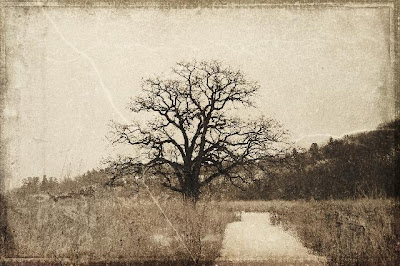My Gamer Geek Past, Part III - The Diablo's in the Details
di·ab·lo (dee-AB-lo, dyah-) noun, plural diablos
1. Spanish for "fighting chicken"
2. Spanish for "devil"
Oh, Blizzard Entertainment.
You're the Pixar, the Christopher Nolan, the Coldplay of video games.* You wowed us with Warcraft, we saw stars with StarCraft, and we died over Diablocraft.
The basic idea is this - you control a character, looking at him/her from above, and move him around and attack using nothing but your mouse. It's that simple. When you're done exploring one area, you move on to the next to face harder monsters with better loot.
Diablo, released in 1996, puts you in the world called Sanctuary, which has become a battleground between the forces of Good and the armies of Evil. Your adventure begins in Tristram, a town that's had about as raw a deal as it gets. The king's gone nuts, his son's been kidnapped by demons, the archbishop's become corrupted, and the town's militia went into the cathedral's catacombs to fight the monsters under the earth only to be slaughtered like so much cattle. You get to follow their lead, travel into the dungeons on your own with naught but a weapon in your hand and rudimentary skills at magic.
You play as one of three classes: the Warrior, who excels at hand-to-hand combat and can withstand a lot of punishment; the Rogue, a master markswoman whose accuracy with a bow is unmatched; or the Sorceror, a wizard whose command of the arcane is at worst deadly and at best devastating to his foes.**
Down, down, down the stairs you go, passing through crypt, catacomb and cave on your way to the literal levels of Hell. Along the way, you fight skeletons come to life, beasts twisted beyond nature's intent, giant monsters with crushing grips and, eventually, the Lord of Terror himself, the titular Diablo. I won't spoil anything here, but suffice to say, the game's ending sets up the next chapter, Diablo II, beautifully.
Diablo II continues the story with you fighting Diablo again (okay, small spoiler - he survives the first game; it makes perfect sense if you play through both games). The gameplay changed in a number of ways as well:
Along the way, you fight the usual mix of monsters, demons and beasts, every so often fighting a "boss" of much greater strength and skill. At the end of each act, you fight one of the Seven Evils from Hell: two Lesser Evils and two Prime Evils, including Mephisto, the Lord of Hatred and Diablo's brother, and the reincarnated Diablo himself.
The expansion to Diablo II, Lord of Destruction, took this already incomparably awesome game and made it awesomer thus:
I can't begin to count how many hours I spent playing this game (a fact which fills me with some regret at how many other productive pursuits I might have...um...pursued). The upside is that it's a testament to just how infinitely playable the game is.
One other matter: I am a cheater. I use cheat codes often and with abandon. In many cases, I'd rather move along the game to enjoy the story than get really skilled at it. I'll go along as far as I can, but when I hit a really hard spot, it's code time.
That said, I love the Diablo games because they don't have any cheat codes. It is possible to hack the games and change some code, but that's computer juju far beyond my comprehension. What the games did, then, is forced me to learn to play and play well. I can proudly say I beat each one with naught by my own finely-honed skills.
Last thought: Diablo III. I want to play it sooooooooooooooooooooo bad. But I can't/shan't. Time and money, folks. Still, watch these cinematics and teasers and tell me part 3 doesn't look legitimately amazing.
 |
| I'ma go ahead and say a cathedral with blood-red light pouring out probably isn't holding Easter mass. |
Down, down, down the stairs you go, passing through crypt, catacomb and cave on your way to the literal levels of Hell. Along the way, you fight skeletons come to life, beasts twisted beyond nature's intent, giant monsters with crushing grips and, eventually, the Lord of Terror himself, the titular Diablo. I won't spoil anything here, but suffice to say, the game's ending sets up the next chapter, Diablo II, beautifully.
 |
| Don't let the pixels fool you - those many many many flames hurt. |
- The vertical dungeon approach is replaced with a more horizontal design; you get to new areas by exploring the borders of the one you're in, moving laterally across the land rather than further underground (though some areas still have several levels on top of each other)
- There are now five classes to choose from:
- The Barbarian, best compared to Diablo's Warrior, using brute strength and tribal shouts to wreak havoc on Hell's minions
- The Necromancer, a master of death who can summon skeletons from the grave to do his bidding
- The Sorceress, a counterpart to Diablo's Sorceror, a student of magic whose command of fire, ice and lightning is powerful enough to make even the strongest demon kneel in submission
- The Amazon, similar to Diablo's Rogue, a fierce warrior woman who wields a bow from afar and a spear up close with deadly accuracy
- The Paladin, a holy soldier with the power to heal others and bless them with auras of both offensive and defensive boons
 |
| Like the Jackson 5, only with sharp objects. And magic. And fewer sequins. |
- In Diablo, each class could learn the same magic spells; in Diablo II, each class had their own unique skills, divided into three "trees" to allow you to customize and choose your abilities as you will
- You can buy the services of hirelings, sidekicks of varying skill to help you along your adventure
Along the way, you fight the usual mix of monsters, demons and beasts, every so often fighting a "boss" of much greater strength and skill. At the end of each act, you fight one of the Seven Evils from Hell: two Lesser Evils and two Prime Evils, including Mephisto, the Lord of Hatred and Diablo's brother, and the reincarnated Diablo himself.
 |
| Mephisto always wondered why Diablo got all the hot dates. |
The expansion to Diablo II, Lord of Destruction, took this already incomparably awesome game and made it awesomer thus:
- Two new classes to play around with:
- The Druid, a shapeshifting wonder who not only summons bears or wolves to fight for him, he can turn into a bear or wolf to boot! Also, fire and ice spells.
- The Assassin, no less than a demon's worst nightmare who kicks, punches and slices her way through evil-doers with bladed hands and furious feet (probably my favorite class overall; not surprising, then, that her fighting style is largely mirrored by WoW's rogue)
- New areas to explore, like the frozen steppes around Mount Arreat
- New quests that take you to the heart of Arreat itself to defeat the last Prime Evil, Baal.
One other matter: I am a cheater. I use cheat codes often and with abandon. In many cases, I'd rather move along the game to enjoy the story than get really skilled at it. I'll go along as far as I can, but when I hit a really hard spot, it's code time.
That said, I love the Diablo games because they don't have any cheat codes. It is possible to hack the games and change some code, but that's computer juju far beyond my comprehension. What the games did, then, is forced me to learn to play and play well. I can proudly say I beat each one with naught by my own finely-honed skills.
 |
| I can proudly say I beat monsters with names like "Snot Razor" all on my own. Many times. |
Last thought: Diablo III. I want to play it sooooooooooooooooooooo bad. But I can't/shan't. Time and money, folks. Still, watch these cinematics and teasers and tell me part 3 doesn't look legitimately amazing.
*Meaning Blizzard can do no wrong
**Diablo:Hellfire, an expansion not made by Blizzard, added a Monk class which combined both melee and magic skills into one class





Comments